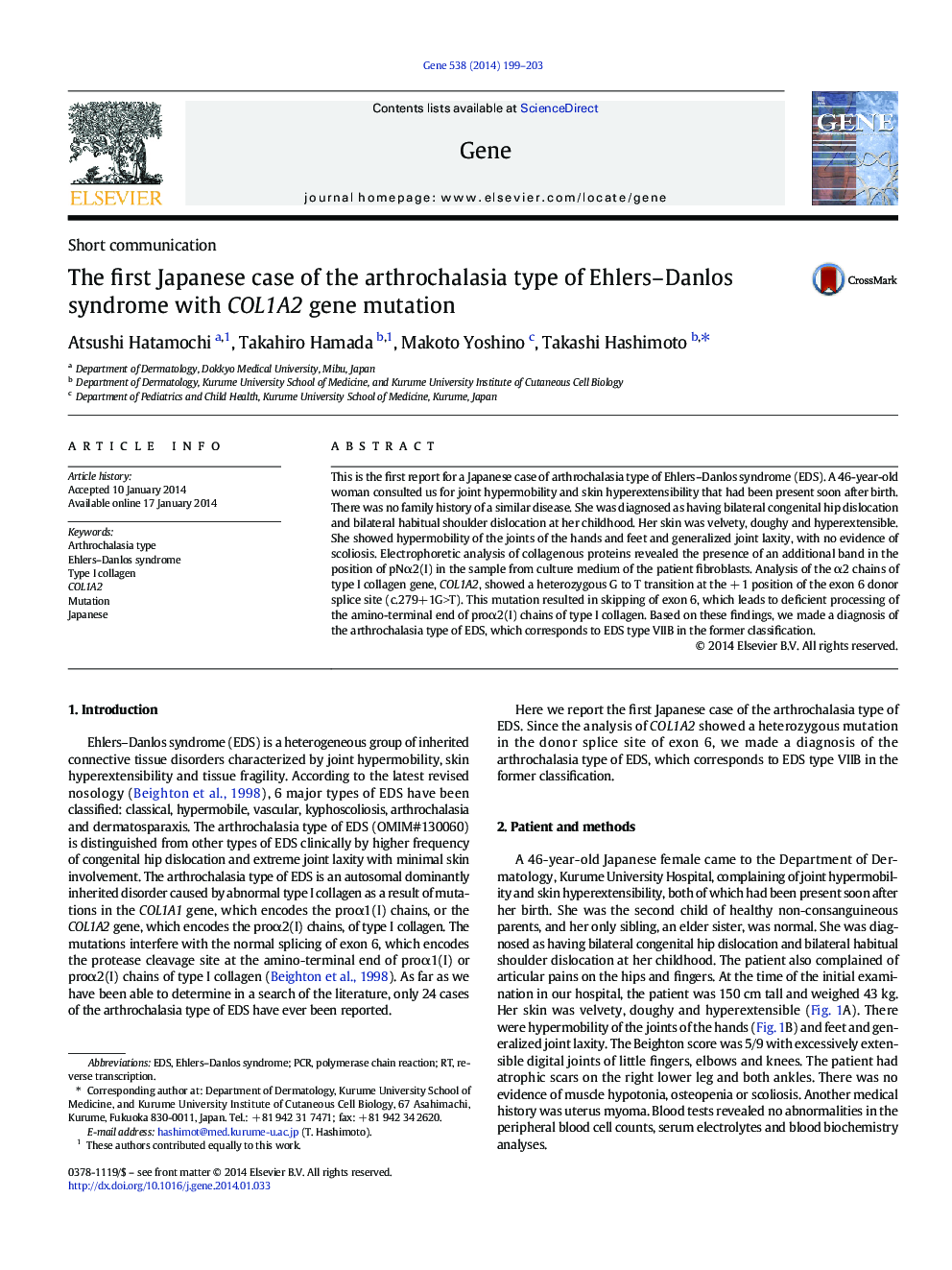| Article ID | Journal | Published Year | Pages | File Type |
|---|---|---|---|---|
| 2816610 | Gene | 2014 | 5 Pages |
•We report the first Japanese case of arthrochalasia type of EDS.•Analysis of the COL1A2 gene showed a recurrent heterozygous mutation c.279 + 1G > T.•The c.279+1G>T resulted in exon 6 skipping.•Exon 6 skipping leads to deficient processing at proα2(I) chains of type I collagen.•Molecular analysis of EDS provides us with accurate diagnosis and genetic counseling.
This is the first report for a Japanese case of arthrochalasia type of Ehlers–Danlos syndrome (EDS). A 46-year-old woman consulted us for joint hypermobility and skin hyperextensibility that had been present soon after birth. There was no family history of a similar disease. She was diagnosed as having bilateral congenital hip dislocation and bilateral habitual shoulder dislocation at her childhood. Her skin was velvety, doughy and hyperextensible. She showed hypermobility of the joints of the hands and feet and generalized joint laxity, with no evidence of scoliosis. Electrophoretic analysis of collagenous proteins revealed the presence of an additional band in the position of pNα2(I) in the sample from culture medium of the patient fibroblasts. Analysis of the α2 chains of type I collagen gene, COL1A2, showed a heterozygous G to T transition at the + 1 position of the exon 6 donor splice site (c.279+1G>T). This mutation resulted in skipping of exon 6, which leads to deficient processing of the amino-terminal end of proα2(I) chains of type I collagen. Based on these findings, we made a diagnosis of the arthrochalasia type of EDS, which corresponds to EDS type VIIB in the former classification.
